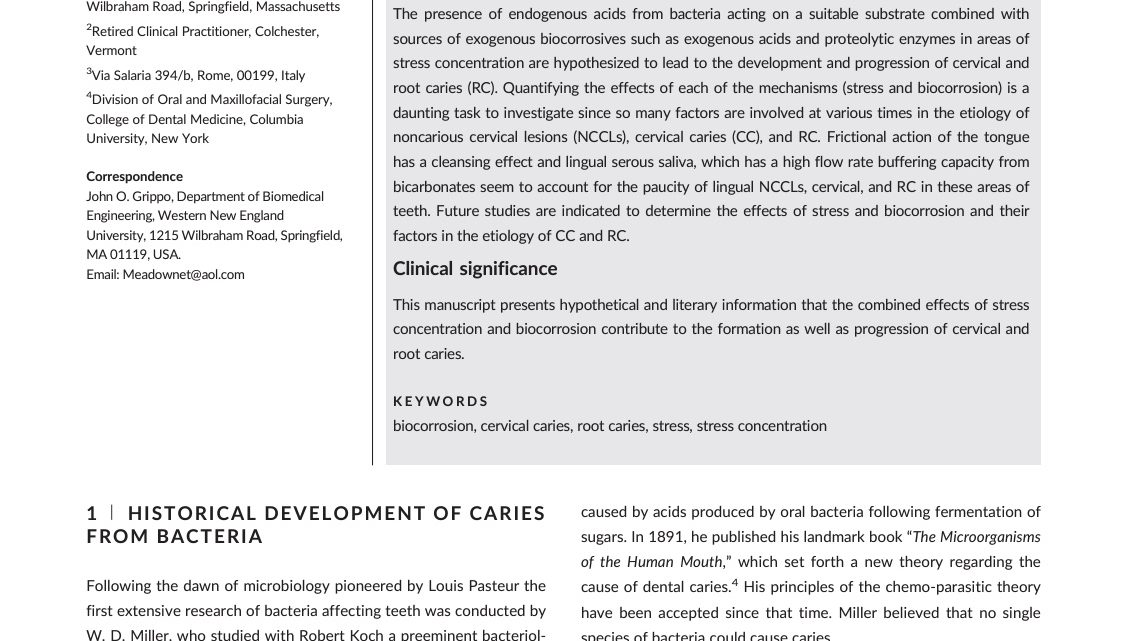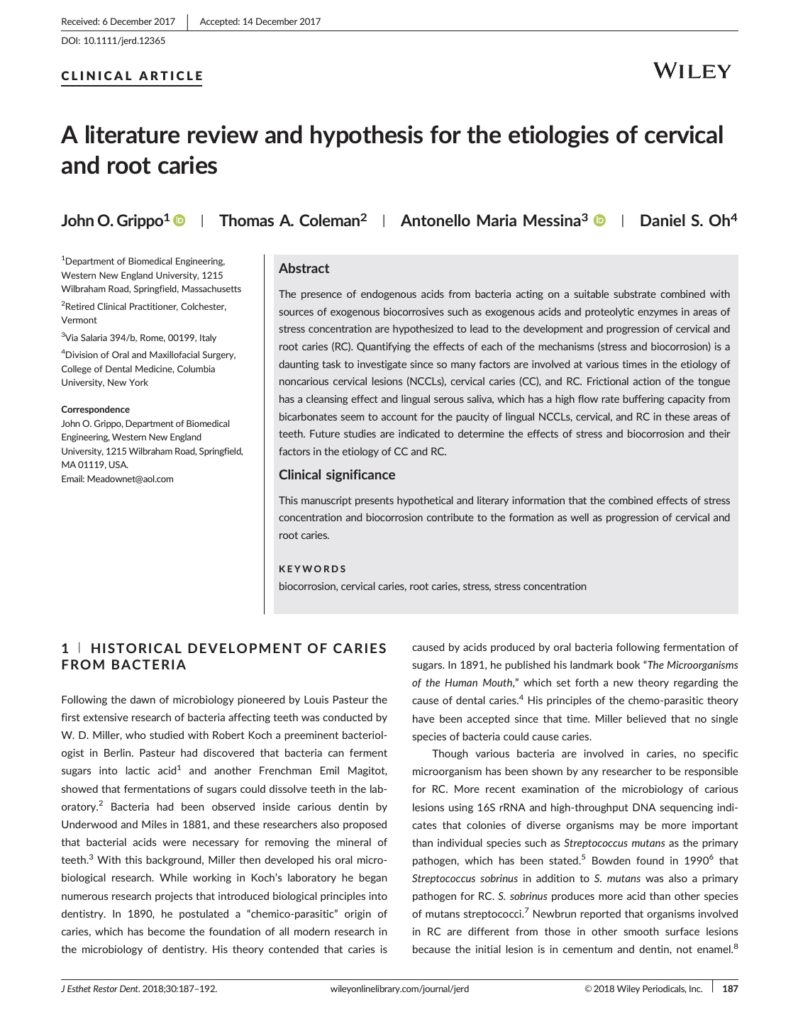
A literature review and hypothesis for the etiologies of cervical and root caries
A literature review and hypothesis for the etiologies of cervical and root caries John O. Grippo, Thomas A. Coleman, Antonello Maria Messina and Daniel S. Oh Version of Record online: 18 JAN 2018 | DOI: 10.1111/jerd.12365
Journal of Esthetic and Restorative Dentistryed. Wiley
Abstract
The presence of endogenous acids from bacteria acting on a suitable substrate combined with sources of exogenous biocorrosives such as exogenous acids and proteolytic enzymes in areas of stress concentration are hypothesized to lead to the development and progression of cervical and root caries (RC).
Quantifying the effects of each of the mechanisms (stress and biocorrosion) is a daunting task to investigate since so many factors are involved at various times in the etiology of noncarious cervical lesions (NCCLs), cervical caries (CC), and RC.
Frictional action of the tongue has a cleansing effect and lingual serous saliva, which has a high flow rate buffering capacity from bicarbonates seem to account for the paucity of lingual NCCLs, cervical, and RC in these areas of teeth.
Future studies are indicated to determine the effects of stress and biocorrosion and their factors in the etiology of CC and RC.

Clinical significance
This manuscript presents hypothetical and literary information that the combined effects of stress concentration and biocorrosion contribute to the formation as well as progression of cervical and root caries.
